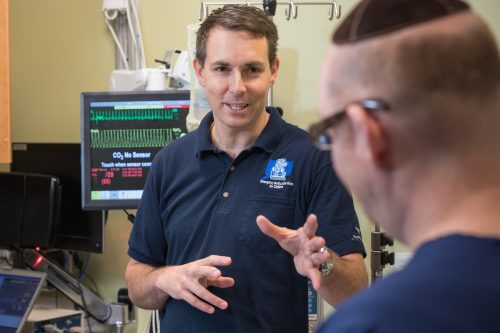A team of doctors, nurses, technicians, and medics from the Yale-New Haven Hospital and the Yale School of Medicine has developed an innovative simulation to improve emergency care for children.
Simulation, defined by the use of mannequins, actors, technological devices or other tools to mimic real clinical care scenarios, has become a key training tool to assist medical professionals in improving pediatric emergency care. Marc Auerbach, MD, and Mark Cicero, MD, among those who led the work, describe how the medical simulation exercises not only serve their typical purpose as educational interventions, but also have been used to optimize the delivery of care. Simulation can be compared to an overlap of clinical and laboratory or bench science, said Dr. Auerbach. They use simulation to study and improve medical providers, systems and equipment, policies and procedures, knowledge and skills, and quality of care. This innovative method of connecting research discoveries to real patient outcomes is also known as “translational research.
It is often difficult to perform research in real clinical care scenarios. Though simulation occurs in a controlled environment, the mannequins and actors have been modified to test systems in a real-world environment. Children and parents are emotional, and stimuli are added for difficulty. Such distractions can include smells, distracting audio, or special health care needs.
Thus far, the mobile simulation program has been brought to 20 of the of the state’s 36 hospitals and to 25 emergency departments outside of Connecticut. The team is also making efforts to launch such programs on a global scale, including video games that are easier to access than simulation and allow asynchronous learning.

